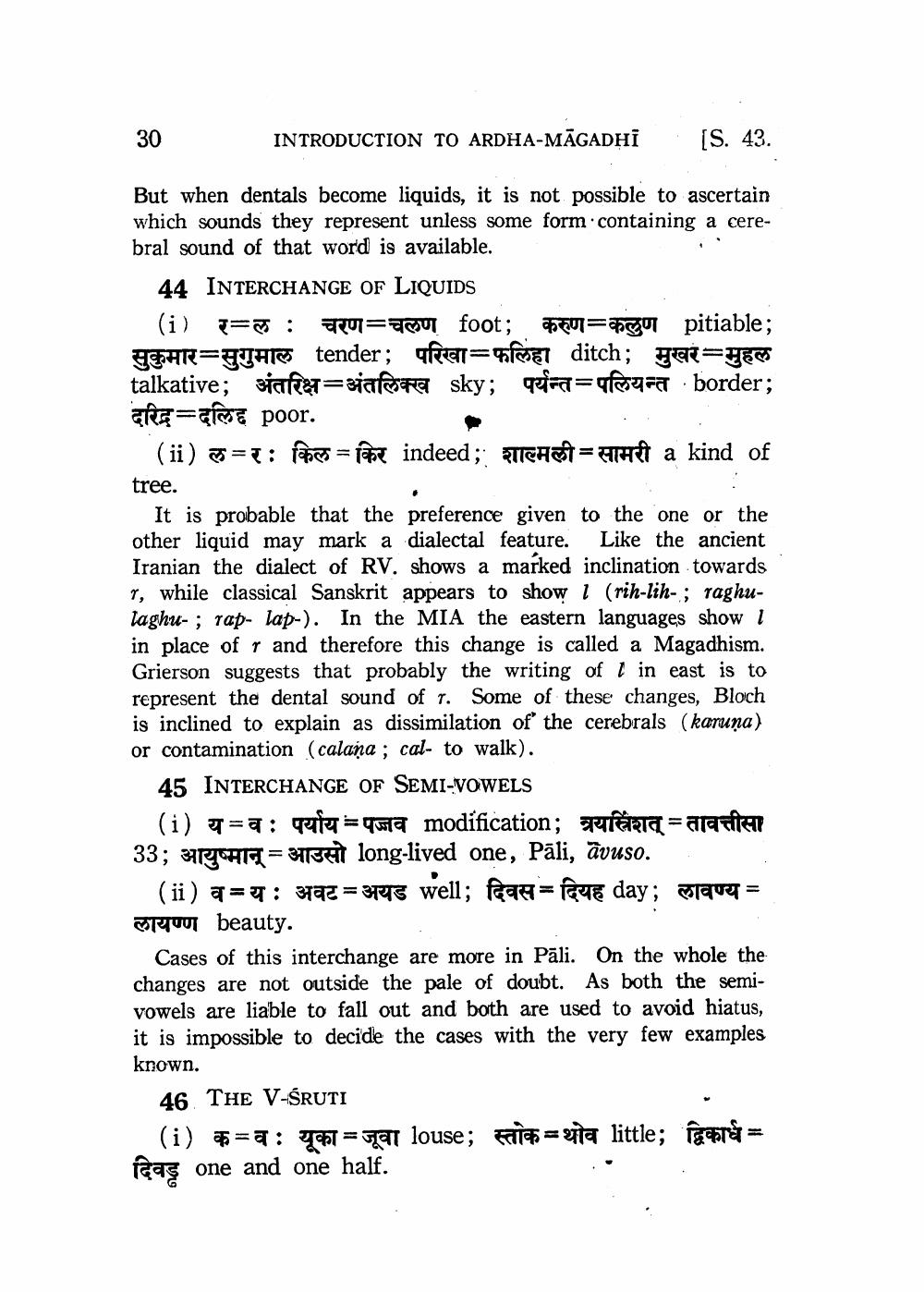________________
30
INTRODUCTION TO ARDHA-MĀGADHI
[S. 43.
But when dentals become liquids, it is not possible to ascertain which sounds they represent unless some form containing a cerebral sound of that word is available.
44 INTERCHANGE OF LIQUIDS
(i) =3 : pourram foot; gal=pago pitiable; JEHR=HTHT tender; fre= et ditch; gat=yE talkative; siang=sjafeste sky; pira=ufsara border; re=ive poor.
(ii) F=T: focs = pare indeed; EUCHT=artt a kind of tree.
It is probable that the preference given to the one or the other liquid may mark a dialectal feature. Like the ancient Iranian the dialect of RV. shows a marked inclination towards T, while classical Sanskrit appears to show 1 (rih-lih- ; raghulaghu- ; Tap- lap-). In the MIA the eastern languages show 1 in place of r and therefore this change is called a Magadhism. Grierson suggests that probably the writing of 1 in east is to represent the dental sound of t. Some of these changes, Bloch is inclined to explain as dissimilation of the cerebrals (karuna) or contamination (calana; cal- to walk).
45 INTERCHANGE OF SEMI-VOWELS
(i) =a: Tafe= qeta modification; pratara = arati 33; 34rent = 316th long-lived one, Pāli, āvuso.
(ii) a = : 37a2 = grys well; fag=face day; sique = लायण्ण beauty.
Cases of this interchange are more in Pāli. On the whole the changes are not outside the pale of doubt. As both the semivowels are liable to fall out and both are used to avoid hiatus, it is impossible to decide the cases with the very few examples known.
46. THE V-ŚRUTI
(i) =a : T = get louse; e = esta little; maana = faas one and one half.




